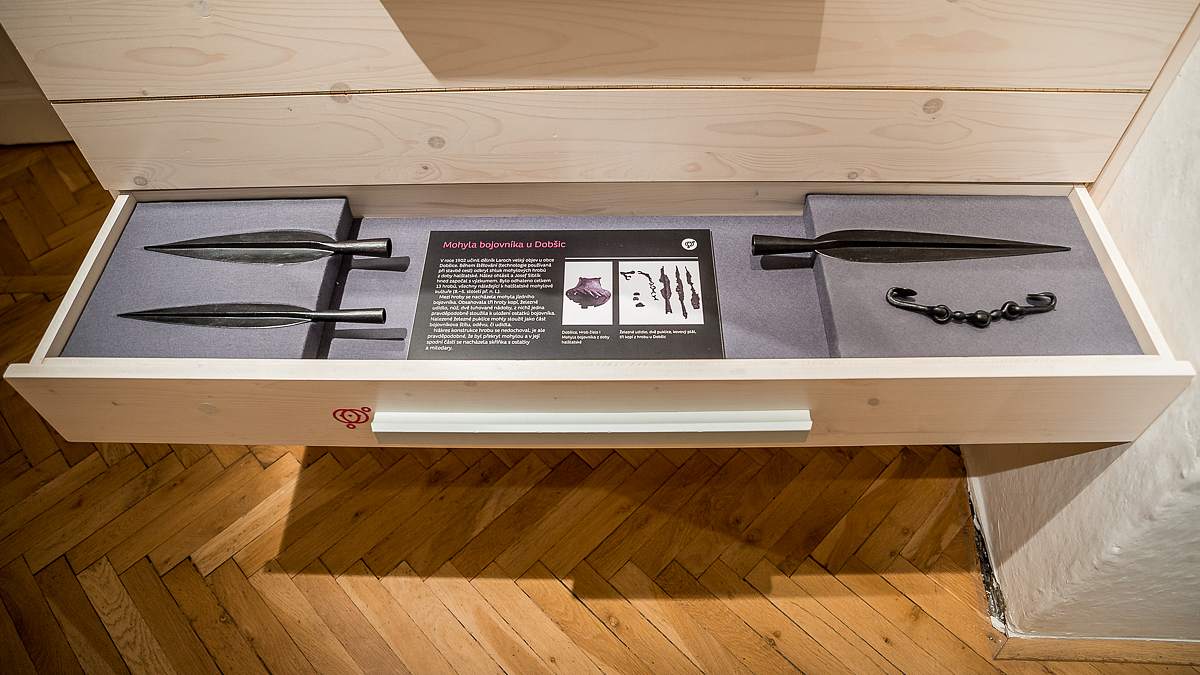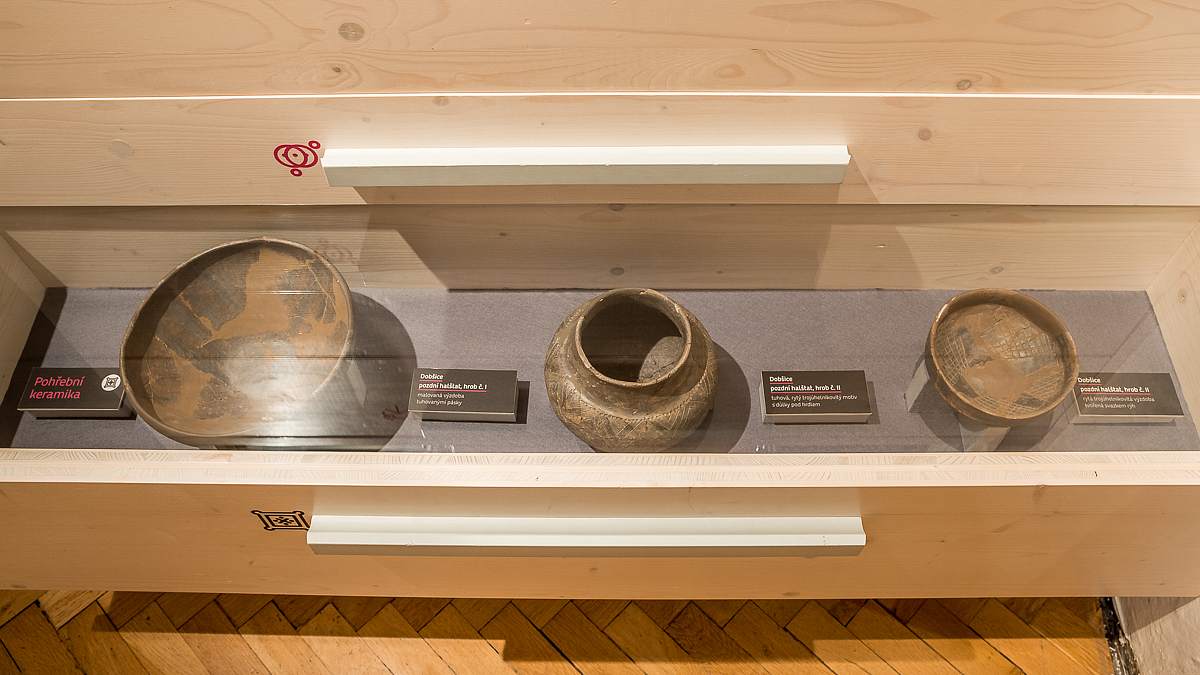MOUND CULTURE
The habit of piling up a mound over graves in South Bohemia had already existed since the Bronze Age and it continued through the Iron Age, in the 8th to 4th centuries BC. The mounds had a circular or oval ground plan with a diameter of up to 20 metres and a height of up to 2 metres. The Hallstatt mounds used to have a wooden or stone structure in the form of a wreath, a mantle on the outside or a stone grave chamber in the middle. Inside the central chamber there were charitable gifts and ashes of the deceased.
The grave equipment varied according to the gender and status of the buried individual. The graves of men-warriors had weapons (swords, spear tips, knives), ironwork from four-wheel carts or horse equipment (bits, ornaments), while jewellery and hygienic items (knives, razors, beads, bracelets) would be placed in women’s graves. The mounds would often be secondarily also used for burial and, as early as in prehistoric times, they would be targeted by grave robbers.
Poorer graves were flat cremation graves, where the ashes of the deceased were stored in a container. Pierced openings in the bottom of the container indicate the belief in the afterlife and the existence of the soul. This simple burial rite had been prevalent in the Blatná region especially since the 5th century BC.
Numerous burial sites from the Iron Age and from the Slavic times were discovered on the hills north of Blatná near the villages of Chlum, Bezdědovice and Dobšice. Due to the clay structure, only a fraction of these ritual buildings has been preserved, namely in wooded areas, where they have not succumbed to intensive agriculture. This method of burial in the Hallstatt period gave name to the local culture – the Hallstatt mound (tumulus) culture.


